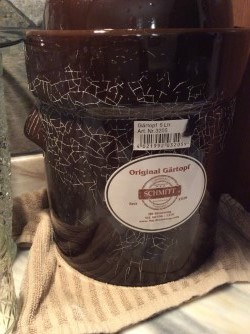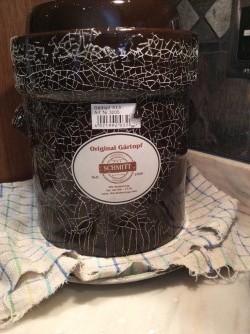Hey -
Just bought a second schmitt crock. First one has worked great. Second one looked fine. However, first use a couple days ago - kosher pickles...... within a day, all of these "powdery" lines appear on the outside. They wipe off, but come right back in 12 hours or so.
Anyone have any ideas?
I am concerned that the crock/glaze has micro cracks that are leaching the salt brine out????
The lines appear to come back in the same place after wiping off. Thoughts?
***EDIT/Update - just want to update initial post for any future readers - The manufacturer quickly replaced this crock as it was defective. They are great crocks overall and I would highly recommend them. Customer service was top notch when I notified with a problem.

Just bought a second schmitt crock. First one has worked great. Second one looked fine. However, first use a couple days ago - kosher pickles...... within a day, all of these "powdery" lines appear on the outside. They wipe off, but come right back in 12 hours or so.
Anyone have any ideas?
I am concerned that the crock/glaze has micro cracks that are leaching the salt brine out????
The lines appear to come back in the same place after wiping off. Thoughts?
***EDIT/Update - just want to update initial post for any future readers - The manufacturer quickly replaced this crock as it was defective. They are great crocks overall and I would highly recommend them. Customer service was top notch when I notified with a problem.



